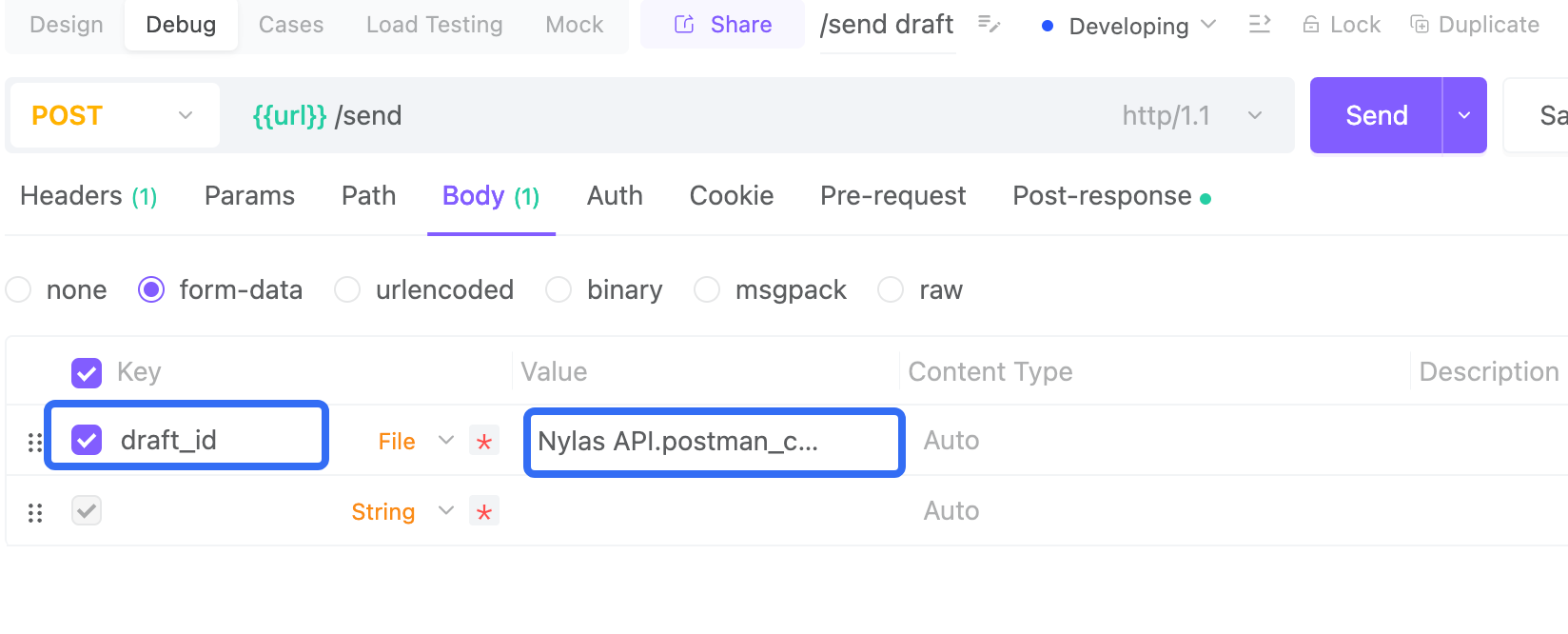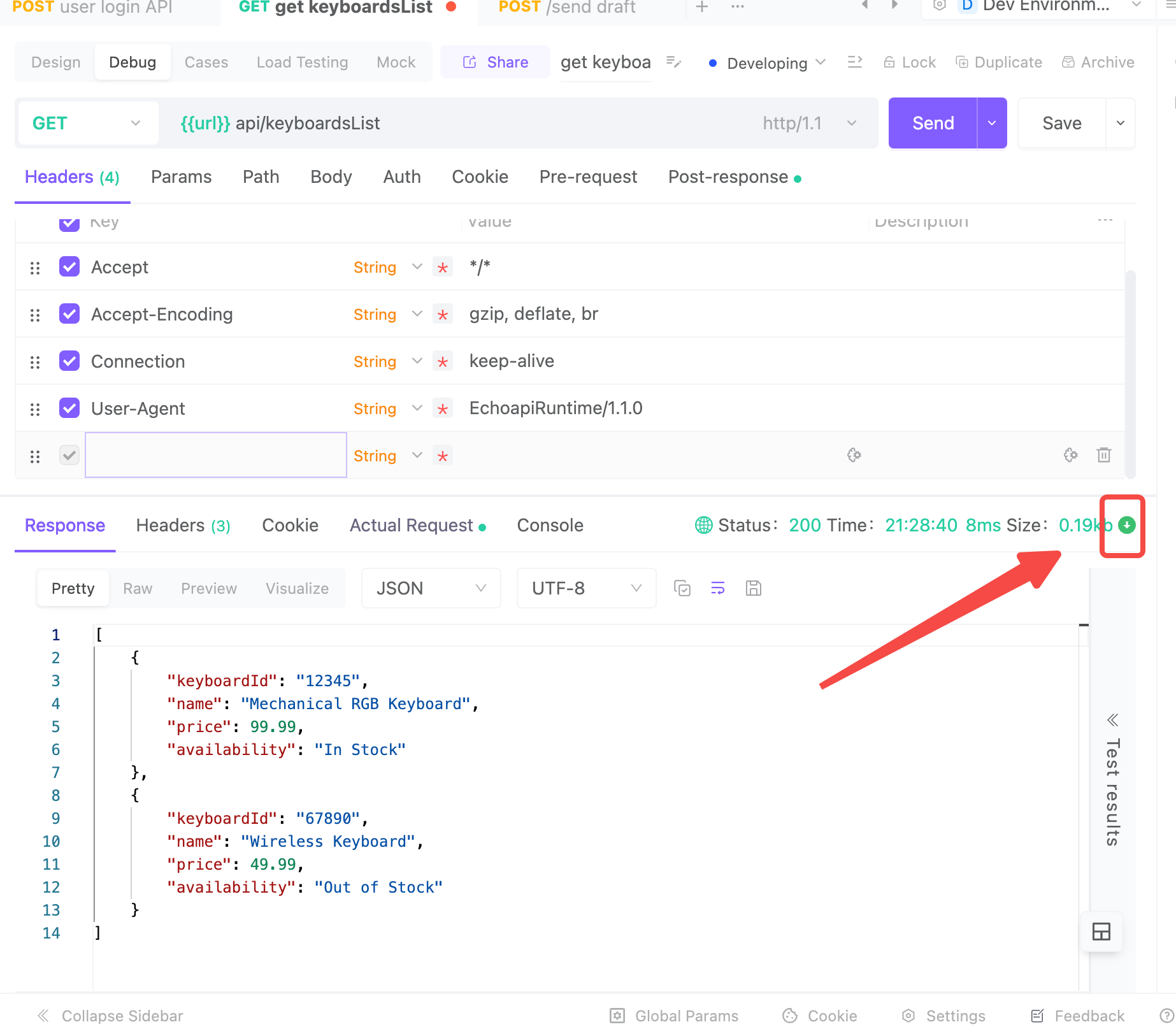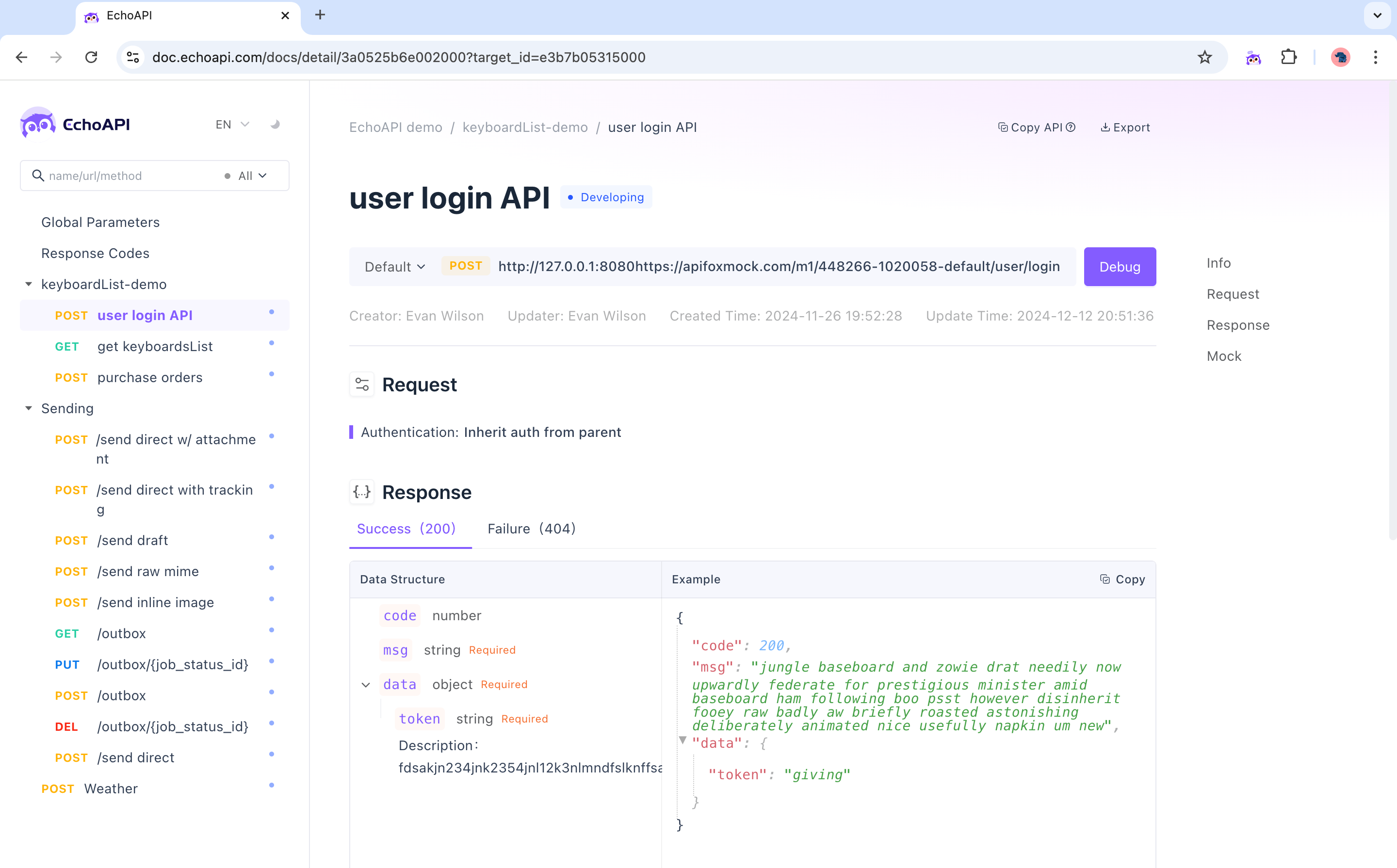EchoAPI Tutorial: Mastering Environment Setup, Token Configuration, and API Testing for Developers
EchoAPI is a powerful and versatile tool for API development and debugging, offering a comprehensive set of features that enhance the efficiency and collaboration within the API lifecycle.
EchoAPI is a powerful tool that supports basic API debugging functions, allowing for customized interfaces, quick cloning of interfaces, and logical management of interfaces. It has a feature for quickly generating documentation that Postman lacks and supports the WebSocket protocol, which Swagger does not. EchoAPI also supports team collaboration with multiple people editing online simultaneously.
Installing the Client
EchoAPI is available as a web version and also as a client. The client supports cross-domain and has better performance; it is recommended to use the client.
Download link: EchoAPI
Environment Configuration
Create a Environment
APIs > New Environment > Enter Name > Save


Create a New Interface

Configure the interface name, address, and parameters. After sending without errors.

Configure Environment Variables
By configuring environment variables, you can call local interfaces for different developers without modifying the address and token for each interface individually. Switching environments will suffice.
Create a new environment variable as shown in the figure below.

Configure the environment name, variable name, and variable value > Save (URL is the developer's local IP and port).


Request the login interface to obtain the token.
The token must correspond to the environment. To assign a token to an environment, switch to that environment and request the login interface, ensuring the service is running. No modifications are needed; just click Send directly.
Copy the generated token > Paste it into the corresponding environment variable and save.

Request the interface; the variable takes effect, and access is successful.

Testing Uploads
Configure the interface address and parameters normally. When uploading files, change the type of the parameter column to "File". Clicking on the parameter value column will pop up a file selection box; select the file you want to upload.

Testing Downloads
Configure the interface address and parameters normally. Click Send, and after the request returns, the console will display "Non-image and non-text formats are temporarily not supported for preview." Click the download button on the right to download the tested content to your local machine.

Generating Documentation
Share the project > Copy the intranet link.
Open the link in a browser

Conclusion
In summary, EchoAPI is a powerful and versatile tool for API development and debugging, offering a comprehensive set of features that enhance the efficiency and collaboration within the API lifecycle. Its ability to quickly generate documentation and support advanced protocols such as WebSocket sets it apart from competitors like Postman and Swagger. The tool's environment configuration capabilities allow for streamlined management of various development settings, while its team collaboration support ensures that multiple users can work on the same project simultaneously without conflicts. With features for testing uploads and downloads, EchoAPI provides a comprehensive solution for all aspects of API interaction. As developers seek to optimize their workflows and produce high-quality APIs, EchoAPI has become a valuable asset, simplifying complex tasks and facilitating effective team coordination.




 EchoAPI for VS Code
EchoAPI for VS Code

 EchoAPI for IntelliJ IDEA
EchoAPI for IntelliJ IDEA

 EchoAPl-Interceptor
EchoAPl-Interceptor

 EchoAPl CLI
EchoAPl CLI
 EchoAPI Client
EchoAPI Client API Design
API Design
 API Debug
API Debug
 API Documentation
API Documentation
 Mock Server
Mock Server








